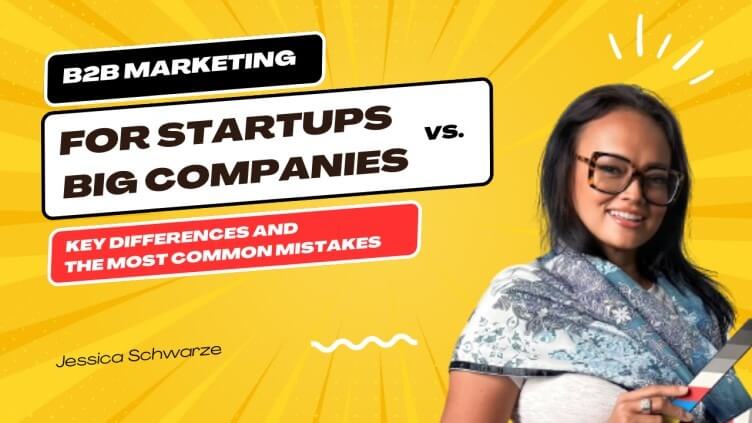We are approaching the end of quarter 3 and this is when most marketers begin to craft the marketing plan for 2024. So, it is the perfect time to discuss the key differences in B2B Marketing for startups versus for large, established companies.
Drawing from my experience working with companies of varying sizes, I will also highlight common “mistakes” in the market.
For very small startups, the primary focus – not surprisingly – should be on generating sales. Therefore marketing should be laser-focused on lead and demand generation. The beauty of this stage is that it allows for experimental marketing, exploring what resonates with the target market. More on that later.
Many large established companies often tend to overly prioritize direct response marketing, believing that everything must generate leads. But, this assumption is not always accurate.
The most significant mistakes I’ve observed are larger companies’ failure to invest enough in their brand, while smaller companies may over-invest in brand and content marketing.
In reality, marketing should adapt its approach based on the company’s stage (and funding availability). Let’s look into the marketing strategies for each stage.
For small B2B Startups:
- The focus is on the short term, primarily generating immediate revenue and managing expenses.
- Marketing activities should revolve around demand and lead generation, Account-Based Marketing (ABM), and outbound marketing. (Read: Account Based Marketing Simplified)
- The objective is to identify in-market leads – potential customers actively seeking solutions. (Read: Are really only 5% of B2B Buyers In-Market?)
- Marketing plays a crucial role in supporting the sales team and building a sales pipeline.
- Key Performance Indicators (KPIs) are measured based on Return on Investment (ROI), with a focus on immediate or near-immediate returns.
- As startups lack historical data, a high level of experimentation is essential to identify what resonates with the audience and drives sales.
- Risk tolerance should be high, as startups have less to lose and can afford some mistakes. Experimentation can help startups stand out against their larger competitors.
The type of marketing leader suitable for this stage is a VP of Demand Generation or someone with a similar mindset.
For large, established companies:
- Focus is on the long term, akin to value investors evaluating businesses based on their balance sheets and assets.
- The core value lies not only in short-term revenue but in brand equity and assets that drive sales over the long term.
- Marketing shifts to managing assets, including brand equity, community building, and robust content engines.
- Large companies have a lower risk tolerance and need to adhere to legal processes to protect their brand reputation.
- Targeting out-market leads becomes vital, considering potential customers who may make purchases in the future. (Read: Are really only 5% of B2B Buyers In-Market?)
- KPIs include not purely ROI, but also brand equity, with a focus on the business’s long-term sustainability.
- The marketing leader in this space is typically a CMO or someone with a CMO mindset, incorporating brand and product marketing in addition to demand generation.
Between the two stages, strategic partnerships with influencers and long-term contracts with significant sales opportunities can generate rewarding mid-term results. In the mid-term, Investments in content and influencer partnerships can foster virality and pave the way for economies of scale.
Lastly, let’s not overlook the strategies for the “very long-term” or “the distant future”.This is where established companies strive to position themselves as true thought leaders, exploring emerging technologies and disruptive opportunities for their industry and their customers’ industries. Heavy investments in R&D, for example, come into play. High risk maybe, but for potentially massive returns.
This concludes my article. What do you think? I would love to hear your thoughts!
** If you’d like me to draft you a marketing plan based on your company’s stage, the marketing budget, and target revenue – DM me!

